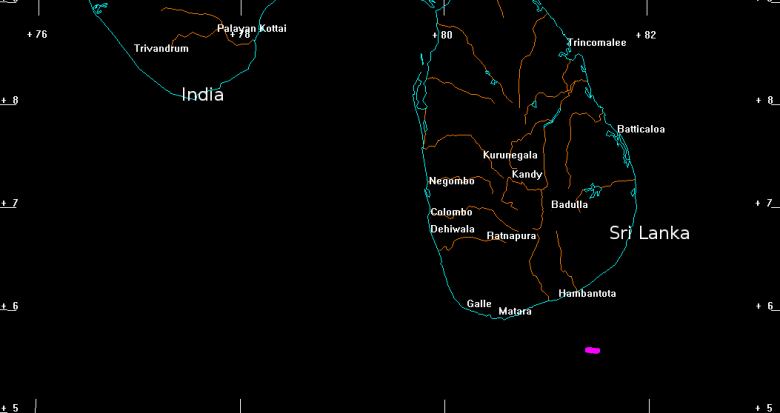Space junk hunk WT1190F will fall to Earth on Friday the 13th
Object named WT1190F prompts no fly-zone, fishing ban near Sri Lanka

The prediction has prompted the Sri Lankan government to impose a temporary no-fly zone and a fishing ban as a precaution.
The orbiting object, named WT1190F and thought to be a discarded rocket body, is expected to re-enter the atmosphere at around 1:19 a.m. ET Friday or 11:49 a.m. local time.
It appears to be hollow and "at most a couple of metres in diameter," according to the European Space Agency's Near Earth Object Coordination Centre, which has been studying it.
"Its mass is not sufficient to cause any risk to the area, but the show will still be spectacular, since for a few seconds the object will become quite bright in the midday sky," ESA said in a news release.

Most of the object is expected to burn up in the Earth's atmosphere. Any that remains is predicted to fall into the Indian Ocean about 65 to 100 kilometres off the Sri Lanka's south coast.
"We don't know what it is so we don't know its shape and how it's going to fragment. A piece of a solar panel, for instance, would behave differently than a booster tank," said Nick Moskovitz, an astronomer at the Lowell Observatory, in a news release. "There is certainly the possibility that pieces could make it to the ground, though I think it's unlikely."
The Sri Lanka Ministry of Defence issued a statement earlier this week saying that:
- The country's chief air controller will observe a no-fly zone above the southern sea area Friday.
- The Fisheries Department has alerted regional authorities about a fishing ban in the predicted landing area.
Orbiting since at least 2009
According to NASA, as of 2013, there were more than 500,000 piecesof space junkorbiting the Earth including 20,000 hunkslarger than a softball. They travel atan average of28,000 km/h, and includenon-functional spacecraft, abandoned launch vehicle stages, mission-related debris and smaller piecesproducedby the breakup of larger objects.
The object WT1190Fwas first detected on Oct. 3 by the Catalina Sky Survey, a project based at the University of Arizona that searches the sky for potentially hazardous asteroids. Researchers later realized that the object, which has a very elliptical orbit, had appeared in images as far back as 2009.
According to Bill Gray at Project Pluto, an astronomical software maker, computer simulations of its orbit suggest it most likely has been in orbit for a decade or less.

The space junk's re-entry is being studied using telescopes by scientists around the world. Theyhope it will help them understand how other objects with this kind of orbit re-enter the Earth.
Despite the no-fly zone, Peter Jenniskens, a research scientist at the SETI Institute in California, is even looking into the possibility of chartering a plane to get aclose look, the Lowell Observatory says.
Slooh, an organization that streams celestial events online from telescopes around the world, expects to release images of the object during a broadcast featuring a discussion with astronomers about space junk.












_(720p).jpg)


 OFFICIAL HD MUSIC VIDEO.jpg)
.jpg)



























































































